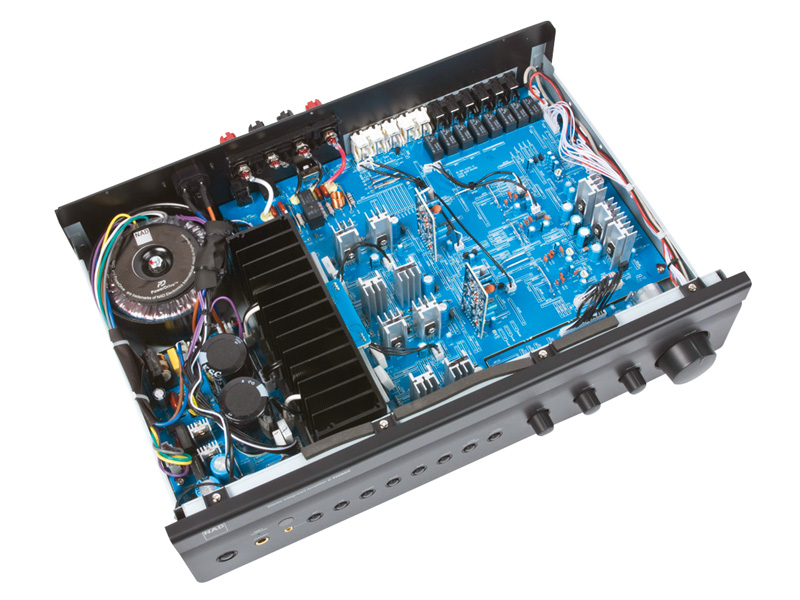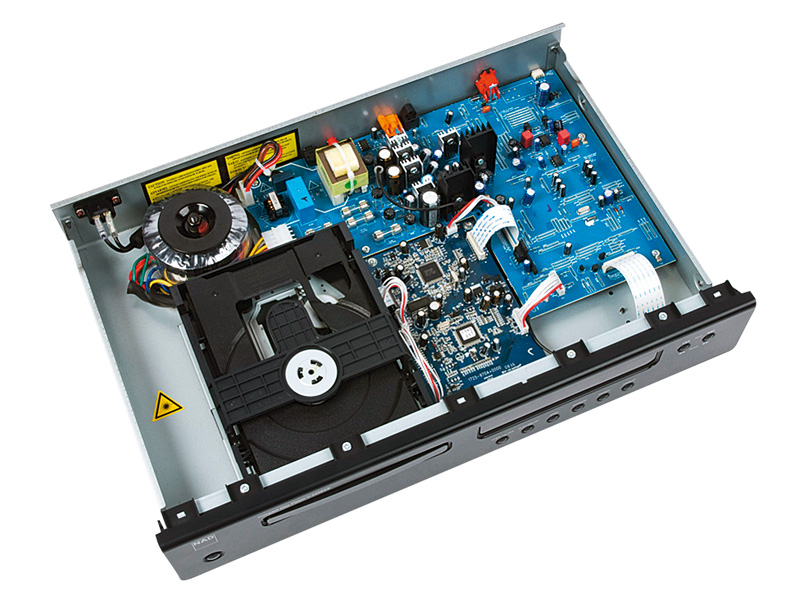TechRadar Verdict
A great pairing of components brings out the detail and definition of music with aptitude. Great budget components and good performance make this highly recommended indeed
Pros
- +
C545BEE
- +
Sound is very fine indeed
- +
Treble is beautifully detailed, yet open and sweet
- +
Player sounds impressive with classical music
- +
C326BEE
- +
Unusually confident into awkward loads and very assured, especially in the bass
- +
Treble is still refined and clear
Cons
- -
C545BEE
- -
Slight lack of bass control
- -
C326BEE
- -
Treble can be a touch recessed
Why you can trust TechRadar
Nowadays manufacturers introduce new product lines and categories undreamed-of a decade ago. So it's always reassuring to find an old favourite remembering the roots from which it grew and NAD's continuing devotion to good old fashioned budget stereo is admirable, and it hasn't wavered from this with the release of the C545BEE CD player and the C326 amplifier.
These are two of the latest fruits of that devotion, presented in classic NAD style in graphite finish with simple, neatly laid-out front panels and moderate but not excessive feature sets.
The amplifier has seven line inputs (phono stages are a thing of the past on NAD integrated models, but the company continues to offer the classic and remarkably cheap £75 PP2 phono preamp), a tape output and separable pre and power amp stages, normally joined by a small link.
One of the inputs, 'MP', is duplicated on the front panel as a 3.5mm stereo jack socket. Tone controls are defeatable, of course, and there's only a single set of speaker terminals, but a headphone socket is also provided.
At first sight, the C326 seems rather empty inside, or at any rate its circuit board is very lightly populated. Removing a service panel from the bottom of the unit, however, reveals a wealth of surface-mounted components on the underside of the board. Almost all of these are discrete and it seems that NAD stands firm in its preference for discrete circuits over integrated – quite an achievement at this price.
The top of the board carries a few more components, including regulators and, of course, the output transistors, which are mounted on a medium-size internal heatsink. There's an impressive number of wire links, which evidently are still cheaper than multilayer circuit boards.

C326 INTERNALS: Not the biggest heatsink we have seen but more than enough to keep it cool
Sign up for breaking news, reviews, opinion, top tech deals, and more.
Inputs are selected by relays, while volume is adjusted by a motorised mechanical control, so problems with premature overload due to high-output sources are avoided.
The power supply shows evidence of cost saving and the mains transformer is rather smaller than you'll find in most £500-ish amps. That's a fair compromise, though, and there's no question about the capability of this one to do what's promised: NAD's power specification of 'greater than 50 watts' is comfortably met.
We measured about 65 watts from both channels together, over 90 watts from one channel and brief peaks of over 100 watts, making this one of the meatiest amps in its class. We were also able to confirm NAD's claims of low distortion and wide bandwidth.
The CD player is straightforward, its one luxury being CD Text, which is available in full detail: Album Title, Track Title and Track Artist (Album Artist is not displayed by a single player or computer application we know of). The display is nicely judged for size, font and brightness are a definite plus.

CD PLAYER EXPOSED: Burr-Brown DACs deal with the conversion in the C535BEE
Discs are loaded quite swiftly by the transport – a proper audio one which makes very little mechanical noise. Data is converted to analogue by a Burr-Brown chip followed by some unusually highperformance op-amps in the output filter/buffer stages.
As with the amp, assembly is smart despite the use of a plastic front panel and the top cover of the unit is a surprisingly thick piece of steel, less resonant than one might expect thanks partly to the way it rests internally on damping pads fitted to the transport mounting brackets.
Sound quality
We tried both units together as a matched pair, but also spent a fair bit of time trying each with various other electronics that we had on hand (all of which were of similar price or somewhat higher). It's fair to say that we started impressed and pretty much remained that way.
The CD player is particularly good for the cash. As we've remarked before, the basic building blocks that go to make up CD players have advanced in price/performance ratio to the point where some very well specified parts are available to designers of ostensibly very modest kit. Sure, power supplies and fancy output stages still cost real money, but it's possible to do very well in a budget design, and NAD's very own Bjorn Erik Edvardsen (Bee) has not missed a trick: this is a very capable player.
It is neutral and detailed, with a spacious yet precise soundstage that stays admirably stable through dynamic ebbs and flows. it also has plenty of rhythmic kick in its sound. Actually the 'neutral' bit needs just a little qualification.
In the bass there is a slightly hollow quality at times, a suggestion that control isn't absolute. At first we though this must be a function of the amp, but it stayed with the CD player when we switched amps and largely vanished when we used the C326 amp with other players. That apart, the C545's approach to tonality is very even handed and the midrange really is little short of exemplary.
The very highest treble is a shade constricted when heard alongside the best that one can buy for around £500, but in isolation it isn't bothersome. There's no obvious musical preference, though we were particularly impressed with the player's showing on classical chamber music – a difficult genre that requires crisp treble but also excellent detail.
In this case results were both believably solid and very melodious. The amplifier fully maintains NAD's reputation for making fearless belters and as we would hope, it drove our usual ATC SCM20 speakers with little trouble (this model needs a fair bit of power, but beyond that is not actually a very difficult load – its impedance is no worse than moderate) but it also had a mighty good go at driving the notoriously tricky Bowers and Wilkins 803S, a current hungry model that was never designed to partner budget amps and can often reduce them to the electronic equivalent of tears.
By contrast in this case, the C326 provides both brute force and subtlety, suggesting that with more likely matching speakers, it is in little danger of running aground. We feel that the amp is not quite as neutral as the CD player and its tonal palette has a slight preference for the bottom half of the spectrum.
We'd far rather have that than the reverse, though, especially when the bass is delivered with both panache and finesse. The very lowest tones of organ, piano and percussion are naturally a little less assured than one would expect from a dedicated power amp, say, and the precision with which the upper bass is handled also lags upmarket models by a small margin. But in its context the bass is really very fine and, as with the CD player, has a pleasing solidity to it.
Treble may be a shade recessed, but it too has considerable refinement, revealing clearly the differences between similar instruments in an ensemble, for instance, and making the most of delicate ambience cues.
As a duo, these two really get on like a house on fire. The whole is distinctly more than the sum of the parts, in a way we don't always find with 'matching' components. For the modest asking price, these two provide a remarkably musical, but also analytical basis for a simple, high-quality system.